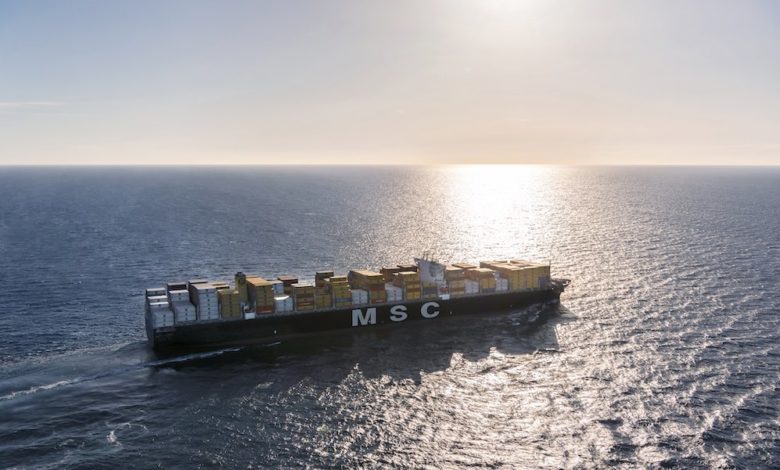HSBC brings forward its trough scenario for container shipping

Banking major HSBC has brought forward its trough scenario for container shipping given the extreme speed with which the sector’s fortunes have declined in recent months.
At the current pace where spot rates are plummeting by 7.5% every week, freight rates may hit 2019 levels by the end of this year, HSBC is now forecasting, a level where the bank expects capacity discipline to meaningfully emerge, especially when rates go below cash costs.
HSBC has brought forward its trough scenario to mid-2023 from 2024, predicting the Shanghai Containerized Freight Index (SCFI) will hit its nadir in the middle of next year, while sector profitability will bottom in the second half of next year. For listed liners, HSBC is forecasting share prices will likely trough by the end the first quarter next year.
It is like the classic boom and bust cycle
The reactivation of capacity after the Golden Week period versus extended blanked sailings will likely determine whether freight rates stabilise any time soon, HSBC argued in a new report, adding that renegotiations of Asia-Europe contract rates in November and December at or above operating costs ought to signal whether the worst is behind container shipping regarding freight rates.
Soren Toft, head of MSC, the world’s largest container line, conceded this week that there will be “some difficult quarters ahead” as his sector gets back to some form of pre-pandemic normality.
A new analysis by BIMCO published today suggested that the container shipping supply/demand balance is now at 2019 levels while freight rate platform Xeneta has given some neat context on the speed of the rate erosion on the transpacific recorded in recent months.
“It took 146 days to get from $5,000 per feu to $9,000, whereas on the way down, it took 119 days for the $5,000 per feu mark to be breached,” Xeneta stated in a new report.
Xeneta has recorded a global drop in container volumes of 1.4% in the year to date.
“The rest of the year seems unlikely to reverse this pattern of falling volumes, especially when considering the high demand at the end of 2021. In 2023, demand growth is not expected to be high enough to counter the effects of high fleet growth, leaving freight rates to continue to slide,” Xeneta stated.
“The slowing down of demand, and the glut of oversupply of containers are all a consequence of the disruptions caused since the outbreak of the pandemic. It is like the classic boom and bust cycle,” commented Christian Roeloffs, the CEO of Container xChange.
“There is a relatively low orders-to-inventory ratio. The retailers and the bigger buyers or shippers are more cautious about the outlook on demand and are ordering less. On the other hand, the congestion is easing with vessel waiting times reducing, ports operating at less capacity, and the container turnaround times decreasing which ultimately, frees up the capacity in the market.” Roeloffs added.
Drewry’s World Container Index, a global spot reference published every Thursday, ducked below the $3,500 mark today for the first time since December 2020.


